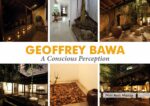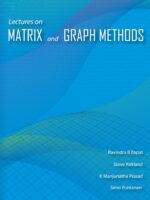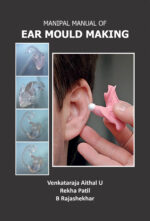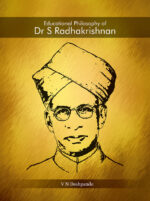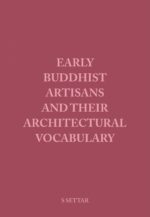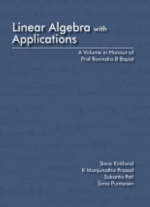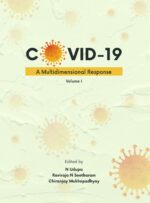Kannadadalli Patthyaparishkarana- Ondu Kaipidi
₹150.00
Author: N T Bhat
ಸ್ವಾನುಭವವಷ್ಟನ್ನೇ ಬಂಡವಾಳವಾಗಿರಿಸಿಕೊಂಡು ತೊಡಗಿದ ಉದ್ಯಮ ಈ ಹೊತ್ತಗೆಯ ರಚನೆ. ಕನ್ನಡದಲ್ಲಿ ಕರಡಚ್ಚು ಪ್ರತಿಗಳನ್ನು ತಿದ್ದಿಕೊಟ್ಟ ಅನುಭವಗಳನ್ನು ತುಸು ವಿಸ್ತರಿಸಿ ಸಣ್ಣ ಕೈಪಿಡಿಯ ರೂಪದಲ್ಲಿ ತಂದರೆ ಒಳ್ಳೆಯದಲ್ಲವೇ ಎಂಬ ಆಲೋಚನೆ ಈ ಕಿರುಹೊತ್ತಗೆಯ ರಚನೆಯ ಮೂಲ. -ಎನ್. – ತಿರುಮಲೇಶ್ವರ ಭಟ್ಟ ಡಾ. ತಿರುಮಲೇಶ್ವರ ಭಟ್ಟರು ದೀರ್ಘಕಾಲ ಅನುವಾದಕ್ಷೇತ್ರದಲ್ಲಿ (ಇಂಗ್ಲಿಷ್ನಿಂದ ಕನ್ನಡಕ್ಕೆ, ಕನ್ನಡದಿಂದ ಇಂಗ್ಲಿಷ್ಗೆ, ಜರ್ಮನ್ನಿಂದ ಇಂಗ್ಲಿಷ್ಗೆ, ಜರ್ಮನ್ನಿಂದ ಕನ್ನಡಕ್ಕೆ) ದುಡಿದವರು ಮತ್ತು ವಿವಿಧ ರೀತಿಯ ಪುಸ್ತಕಗಳ ಯೋಜನೆ, ಸಂಯೋಜನೆ, ಪುನರ್ನಿರೂಪಣೆ, ಸಂಪಾದನೆ ಮೊದಲಾದ ಕೆಲಸಗಳನ್ನು ಮಾಡಿದವರು. ಈಯೆಲ್ಲ ಕೆಲಸಗಳಲ್ಲಿ ಸತತವಾಗಿ ಒಳಗೊಂಡಿರುವುದು ಕರಡಚ್ಚು ತಿದ್ದುವ ಕೆಲಸ. ಯಾವುದೇ ಕಾರ್ಯಕ್ರಮದಲ್ಲಿದ್ದರೂ ಅದರ ಎಡೆಯೆಡೆಯ ಬಿಡುವಿನಲ್ಲಿ ಒಂದಿಷ್ಟು ಕರಡಚ್ಚು ತಿದ್ದುವ ಕೆಲಸವನ್ನು ಸತತವಾಗಿ ಮಾಡುತ್ತಲೇ ಬಂದವರು. ಪಠ್ಯಪರಿಷ್ಕರಣದ ಹಲವು ಹಂತಗಳನ್ನು ಚೆನ್ನಾಗಿ ಬಲ್ಲ ಅವರು ತಮ್ಮಲ್ಲಿರುವ ಮಾಹಿತಿಯನ್ನೂ ಅನುಭವವನ್ನೂ ಕ್ರೋಡೀಕರಿಸಿ ಕನ್ನಡದಲ್ಲಿ ಪಠ್ಯಪರಿಷ್ಕರಣದ ಆವಶ್ಯಕತೆಯೇನೆಂಬುದು ಸರಳವಾಗಿ ಈ ಪುಸ್ತಕದಲ್ಲಿ ನಿರೂಪಿಸಿದ್ದಾರೆ. ಅವರಿಂದ ಭಾಷಾಕ್ಷೇತ್ರಕ್ಕೆ ಇನ್ನಷ್ಟು ಸೇವೆ ಸಲ್ಲಲಿ ಎಂಬುದು ಮನದಾಳದ ಆಶಯ. – ಪಾದೇಕಲ್ಲು ವಿಷ್ಣು ಭಟ್ಟ.
Interested readers may write to us at mup@manipal.edu about purchasing the book.
| Also available on |
| Categories: | Academic and Reference, Kannada |
|---|
Related products
-
Geoffrey Bawa – A Conscious Perception
₹650.00This book is all about giving the readers a peek view into the life of Geoffrey Bawa; Sri Lanka’s most famous architect… a book that reveals an insight into his work through his most famous projects accompanied by beautiful hand drawn illustrations. Alluring and simply authentic, these self-narrative illustrations are a result of a personal experience. This book will give readers an understanding of how successfully Geoffrey Bawa had inculcated spaces, vistas and landscape with that of the built environment bringing about a touch of Modern Tropism and fusing it together with the rich culture and traditions of Sri Lanka.
Interested readers may write to us at mup@manipal.edu about purchasing the book.
-
Lectures on Matrix and Graph Methods
₹580.00Lectures on Matrix and Graph Methods Lectures on Matrix and Graph Methods portrays selected lectures delivered by leading Mathematicians and Statisticians in the International Workshop on Combinatorial Matrix Theory and Generalized Inverses of Matrices organized by Department of Statistics, Manipal University, Manipal, India, during January 2-7, 2012. This book covers the topics even beyond the traditional applications of matrix theory and spectral theory of graphs. Graph Theoretic Applications to Computing the Nucleolus of an Assignment Game by T E S Raghavan and Introduction to Yantra Magic Squares and Agrippa-type Magic Matrices by G P H Styan et al. are among those topics. Also, an interview with S K Mitra in 1993 by G P H Styan and Simo Puntanen is presented here.
Ravindra B Bapat, Steve Kirkland, K Manjunatha Prasad, Simo Puntanen Ravindra B Bapat is at the Indian Statistical Institute, Delhi Centre. His main areas of interest are combinatorial matrix theory, matrices and graphs, and generalized inverses. He is a Fellow of the Indian Academy of Sciences, Indian National Science Academy and a J C Bose Fellow. He served as the President of the Indian Mathematical Society during 2007-2008. Steve Kirkland is a Stokes Professor at the National University of Ireland Maynooth. His research interests include non-negative matrix theory, spectral graph theory, and combinatorial matrix theory. He is currently the Editor-in-chief of the journal ?Linear and Multilinear Algebra?, and the President of the International Linear Algebra Society. K Manjunatha Prasad earned his PhD from Indian Statistical Institute. Currently, he is a Professor of Mathematics at Department of Statistics, Manipal University, Manipal. His research interests are matrix theory, generalized inverse, ring theory and projective modules. Simo Puntanen earned his PhD in statistics from the University of Tampere (Finland) in 1987, where he is presently a Lecturer.
Interested readers may write to us at mup@manipal.edu about purchasing the book. -
Manipal Manual of Ear Mould Making
₹195.00Authors: Venkataraja Aithal U, Rekha Patil and B Rajashekhar
Manipal Manual of Ear Mould Making is a comprehensive workbook of value to students of Audiology & hearing professionals who wish to understand the nuances of this skill that is paramount for optimization of hearing aid fitting. This is a compilation of the authors? years of experience in the deft skills of ear mould making and patient care in Manipal Ear Mould lab. Considerable efforts have gone in to bringing out this manual by incorporating appropriate pictures, stepwise procedures and simple instructions. This manual, besides appraising the readers of the procedure would also assist them in learning the dos and donts picked up out of the authors? clinical experience. This will be a reflection of our ongoing efforts to derive the best out of the rapidly developing technology in the area of hearing impairment.
Interested readers may write to us at mup@manipal.edu about purchasing the book.
Also available on

-
Educational Philosophy of Dr S Radhakrishnan
₹495.00Author: V N Deshpande
Educational Philosophy of Dr S Radhakrishnan effectively presents Radhakrishnan’s thoughts, highlighting their relevance to the present day. The author has at length discussed Indian Philosophy in comparison with the Western thought and successfully established that the East-West synthesis as propagated by Radhakrishnan is the need of the hour. The readers will also get an account of Radhakrishnan’s life story in the backdrop of the political history of pre and post-Independent India. This book is Dr V N Deshpande’s posthumous publication.
Interested readers may write to us at mup@manipal.edu about purchasing the book.
-
Early Buddhist Artisans and their Architectural Vocabulary
₹1,600.00Author: S Settar
The early Buddhist architectural vocabulary, being the first of its kind, maintained its monopoly for about half a millennium, beginning from the third century BCE. To begin with, it was oral, not written. The Jain, Hindu, and other Indian sectarian builders later developed their vocabulary on this foundation, though not identically. An attempt is made here to understand this vocabulary and the artisans who first made use of it.
In the epigraphic ledger, the first reference to the mythical creator of the universe, the Visvakarma (Visakama), is made on the thupas at Sanchi and Kanaganahalli; the earliest excavators of cave temples, comprising five specialists – selavdhaki, nayikamisa, kadhicaka, mahakataka and mithaka – as well as a team of master-architects and supervisors, called the navakamis, appear at Kanheri. Besides these, there were also others called avesanis, atevasinas, acaryas, and upajjhayas all over the Buddhist world. The list does not end with these, because there were yet others called vadhakis (carpenters), seli-vadhakis (stonecutters), sela-rupakas (stone sculptors), mithakas (polishers), and so on. All these artisans who have recorded their life stories on the stone surface are identified, and their professional contributions evaluated here for the first time.
International Edition available on South Asia Edition available on -
Linear Algebra with Applications
₹650.00Linear Algebra with Applications portrays selected articles published earlier by Prof Ravindra B Bapat in various reputed journals. This volume published in honour of Prof Bapat, on the occasion of his 60th birthday, consists of his original research articles written in the area of (i) Permanent, Determinant and their applications, (ii) Non-negative Matrices, (iii) Matrix Methods in Statistics and Graph theory, and (iv) Generalized Inverses of a Matrix. Starting with an article A Generalization of a Theorem of Ky Fan on Simplicial Maps, his first article published in 1980, several articles probing the properties of permanent and determinant, characterization of generalized inverses, spectral properties of graphs, and applications of matrix methods in statistics are compiled in this volume. The articles selected in this book will certainly inspire the young linear algebraists and provide several matrix techniques to solve different problems in the area of applied linear algebra.
Interested readers may write to us at mup@manipal.edu about purchasing the book.
-
COVID19: A Multidimensional Response
₹2,200.00Editors: N Udupa, Raviaraja NS, Chiranjay Mukhopadhya,
COVID-19 disease is caused by the SARS-CoV-2 virus, first detected in November-December 2019 in Wuhan, China. Thus far, more than 7 million people have been infected with the novel coronavirus across the globe, and the count is increasing with every passing day. Even though it causes severe respiratory problems, the majority of patients show mild symptoms, and pathogenesis is under investigation. Although several drugs are being developed and many of them are undergoing clinical trials, currently there are no approved drugs/vaccines to cure this disease. Personal hygiene and social distancing are important means to prevent the spread of this disease. With the advancements in scientific research, humankind is hoping to find a potent drug/vaccine for this disease at the earliest. The health care professionals and scientific community are at their maximum in combating this viral infection. In this book, an attempt is made to compile various aspects of COVID-19 in a single platform, which include aetiology, epidemiology, its clinical manifestations, diagnosis, pathological, clinical and therapeutic facets, comorbidities, risk factors, and the essential precautionary measures. This book comprises around 29 chapters contributed by various experts from research and clinical backgrounds.
Interested readers may write to us at mup@manipal.edu about purchasing the book.
-
Journalism and Journalism Education in Developing Countries
₹550.00Editors: Beate Illg, Beatrice Dernbach
Free and fair media are at the heart of any democratic set up. A thriving field of journalism and zealous and ethical journalists in that sense become torch bearers of a brighter and promising tomorrow. In this light, the status of journalists, the most important actors in the field becomes increasingly important as a matter of study. They act as gatekeepers of information that is flooding in the era of new media, a wave that is not so new anymore. Their roles remain intact and even becomes prominent in the chaos of many-to-many communication.
Not concentrating on specific countries, selected contributions in the book reflect on the developments of media and journalism education across different countries. Introducing the book with an overview about the state-of-the-art of journalism education and the research on a meta level, the book moves on to talk about media studies in the Asian countries and in Arab world, the African States and Brazil.
The recent economic and social developments present both opportunities and risks for journalism. Freedom of expression and freedom of press, even in democratic countries, are under pressure. This book provides an international perspective on the different aspects of journalism – the situation in which journalists work, their working conditions, educational backgrounds, struggles and successes. It is aimed at an international public interested in the field of journalism and freedom of speech. It addresses journalists, trainers and academics. Furthermore, institutions in the field of development cooperation, education or cultural policy and cultural education are the focus of this work. Though the book is focused on journalism and journalism education in developing countries, contributions are from across the globe. This book is an interesting read for all those who care about a vital media landscape and an open democratic society.Interested readers may write to us at mup@manipal.edu about purchasing the book.


